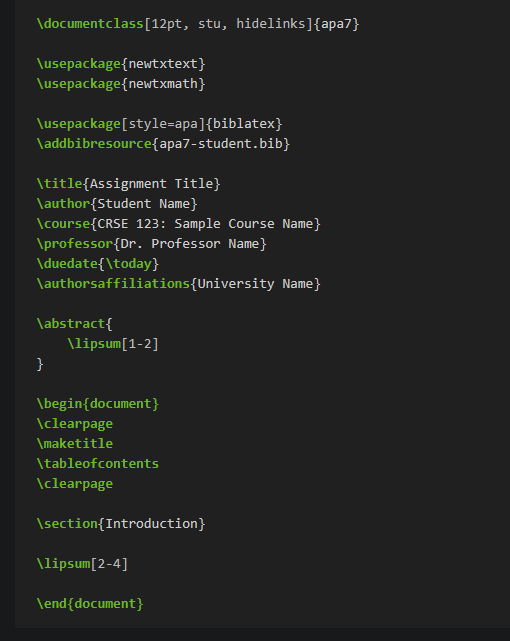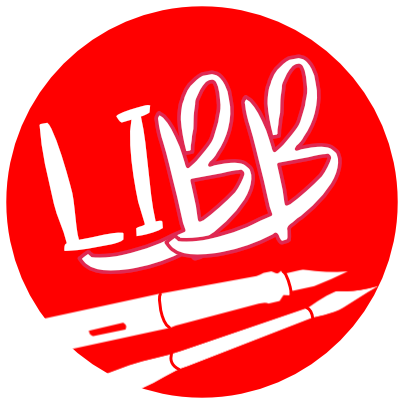Hullo scientists, fellow researcher here with a question for peers:
Do you have any suggestions for closed-off writing software (no AI scraping, no school oversight, no cloud storage with mysterious and unknown security). As we are all aware, formatting an article can take as much effort as writing the damn thing some days, especially if you do not want to use Microsoft or Google for ethical and privacy reasons.
My peers and I work with a lot of students who want to study and work with vulnerable populations, the sort of populations that some companies and (shameful) universities are attempting to delete evidence of. I am attempting to address some concerns coming up in the classroom without putting my career at risk. What better way than with a lesson and a resource list for secure writing and storage tips?
The school doesn’t pay for a Microsoft license, and some students have expressed feeling unsafe and uncomfortable supporting google. I have suggested Libreoffice as its what I use but some of the students are really struggling with formatting their papers to academic standards in this software. Admittedly, I agree, Libre takes 7-14 steps to do some things google can do in two clicks. I would like to look into alternatives.
Most of the writing applications I’m seeing both free and paid tend to be for creative writers or note taking and I am not seeing tools to make running titles or easily format your sources.
What are you all using, do you have recommendations? I
deleted by creator
wonderful! I will add this and your explanation to the list I am compiling. Students love trying new apps
Seconding LaTeX. It’s kind of the standard for scientific writing. If you want to give them a head start toward that end, it’s the go to.
I will point out that it’s not an editor but more like a format. It’s kind of like HTML in that your document (without a WYSIWYG editor) looks like raw text with some codeword markup. This means there’s a bit of a learning curve. But once you run it through the processor it will spit out professional and good looking documents. I have co-workers in a very MS Word dominated environment that would love to write everything in LaTeX.
You can also find open source WYSIWYG editors to make it easier for them to get started.
Seconding LaTeX as the gold standard for formatting math/science in written form. Some of my peers in grad school (physics) wrote up their assignments in it (I opted instead for massive reams of handwritten work). However, I did write up my thesis in LaTeX. My university had a LaTeX template for a thesis that took care of the boilerplate formatting, I just had to focus on the content.
interesting, could you tell me a little more about this? I am on their webpage and they emphasize that they are not a word processor application. I am looking at this page on APA formatting examples and thinking that it could be very useful for my graduate classes but probably a bit above (terrify the shit out of) the sophomore class.
 It seems to require some knowledge of script writing. I’ll add it to the list because I’m sure a lot of folks will use it but I think that image alone would have some of my students going down to the office to switch majors XD
It seems to require some knowledge of script writing. I’ll add it to the list because I’m sure a lot of folks will use it but I think that image alone would have some of my students going down to the office to switch majors XDThere’s a large ecosystem of software built around LaTeX that provide different types of interface and other features—see here:
Any recommendations?
For a powerful and resilient LaTeX experience, having used many editors and IDEs, I really feel nothing comes close to a properly configured Emacs with the right packages installed (there are various blogposts and walkthroughs online for that).
TeXStudio if you want something that is easy to set up. VSCode + LaTeX Workshop if you need features from VSCode (other extensions, git integration,…).
Note that you still have to bring your own LaTeX installation (I always use TeXLive, but there are other options)
For literature I’ve found Zotero + BetterBibTeX plugin very nice, otherwise JabRef also exists but is much more “raw”.
deleted by creator
It’s been a while since I last used LaTeX since I am in industry now, but there is definitely a learning curve. If you are talking about undergrads, then it might be too steep a challenge for most to want to take on unless they plan on pursuing academia long-term. Like others have mentioned, LaTeX is a kind of standard that you see used a lot in academic circles. Some journals also like or support things that are created through tex and will have their own templates to use.
Basically, LaTeX consists of writing in a markup language, like your screenshot, and then running that through a processor that interprets your
.texfile and creates the formatted output (usually a pdf). Back in my day, TexnicCenter was the program of choice to write the actual.texfile, but some quick searching and it looks like VSCode with an appropriate extension is probably one of the best/easiest ways to do it now.The most annoying part of tex is references. I remember being utterly confused by BibTeX when I was trying to get it to work. I am way out of date on what best practices for today might be, but I hope they have improved that process somewhat.
Reference management is one thing LaTeX is really good at. Especially if you use it with a literature management system such as Zotero.
VSCode + LaTeX Workshop Extension is what I use today, but I would recommend TeXStudio as editor if you don’t need any specific features from VSCode.
I teach my physics undergraduates the basics of latex for writing. They usually figure it out. It’s basically like writing some code. The biggest pain are graphs. And like a lot of code these days, chatgpt can help a lot.
If you just need to write basic text formatted using apa, you could find or create a template and give it to your students. Then they won’t even need to think about the formatting cause the template will deal with it all correctly.
Oh, i should add, in that screenshot, most of that code creates the fornatting. Once that is set, your actual content with words and paragraphs looks mostly like text.
Start with a minimal preamble and start testing it out.
deleted by creator
deleted by creator
if you want to throw in citation manager, zotero has a plugin that works with libreoffice
I like Overleaf for LaTeX, you can even self-host it.
LaTeX is the go to for academic papers and I’ve and liked overleaf too.
I would try the free https://typst.app/ on the command-line. It’s a simpler LaTeX.
Thanks, I never heard of this before.
local tex install in your editor of choice.
The school doesn’t pay for a Microsoft license, and some students have expressed feeling unsafe and uncomfortable supporting google.
I can relate to their feeling. The same with with MS Word.
have suggested Libreoffice as its what I use but some of the students are really struggling with formatting their papers to academic standards in this software. Admittedly, I agree, Libre takes 7-14 steps to do some things google can do in two clicks. I would like to look into alternatives.
I see mention of LaTeX, imho forget about it. It’s great but if your students already are complaining about clicking a few buttons and menus in LO Writer, I doubt they will enjoy configuring LaTeX at all as it’s really complex to setup and it’s also very, very technical. (It is also very much English focused by default, which means there will be a few more tweaks required to make it support other languages and where that turns out to be real fun is that said tweaks may vary depending the libraries you’re relying on since you install various ones and, of course, the doc will not always be reflecting that exactly.)
Most of the writing applications I’m seeing both free and paid tend to be for creative writers or note taking and I am not seeing tools to make running titles or easily format your sources.
Have you considered using templates (and Styles) with LibreOffice Writer?
You could have all your formatting be exactly like you need it to be and you (or anyone else) would only need to prepare it once and make it available to all your students. So, the template being 7 or 14 steps would not mean much since they would not need to do it at all and the one person doing it would doi it only once.
What they would need to (learn to) do is to use Styles, in Writer. Like they are supposed to (learn to) use them in Word, and like in a very limited way they can do in Google Docs too. Imho between the three word processors, Writer is the best at managing Styles but it wills till require some basic learning like showing them what styles are and why they’re so useful, where they are and how to apply them in Writer.
Without using Styles in a word processor, you will need to rely on LaTeX or some lighter markup language (like Markdown combined with say Pandoc, which are way simpler than LaTeX but also much more limited in terms of page layout and notes management).
Also, there is no ready-made tool available that you ‘simply use’. They all need to be tweaked in some way to meet expectations and the simplest way I can think of is by using Styles. What are Styles you may ask? Think one type of content (title, simple paragraph, notes, illustrations, …) being associated to a set of formatting rules that are automatically applied to it whenever it is used).
It could help to share some real example of the type of setings you’re looking for (what do you want to do?) so others may be able to tell you if and with what app it’s doable ;)
In summary, Libre Office:
-
Is Libre software.
-
It use an open format, ODT, that is documented.
-
Can be used to write in many languages.
-
Works great with Styles, allowing documents to be (easily) precisely (or loosely) formatted.
-
Doesn’t push AI crap, or any other type of connected crap.
-
Doesn’t spy on anyone (you can even deactivate the little banner that pops up once in a while asking for a donation)
-
Can do Styles and use templates to create very neatly formatted documents.
-
Is preinstalled with most Linux distributions out of the box, and is easy to install on Mac and on Windows.
-
is NOT as precises as LaTeX, but is also much simpler to learn and use.
-
is NOT available for mobile, but I have yet to see anyone writing a full book or even an article on a phone screen ;)
-
is NOT as simple as using Markdown and Pandoc but offers all formating control 99% of users wil ever need AND offers a much easier way to work collaboratively between non-geek users.
deleted by creator
All good suggestions, but this part is iffy. I’ve had course instructors provide boilerplate for students so that they don’t need to worry about formatting. There are also WYSIWYG LaTeX editors like LyX. Finally, language support for LaTeX has expanded considerably over the years.
Don’t get me wrong, I framed my remark in regards to the context given by the OP: their students already have complained about too much configuration (clicking buttons/menus). So, in that context, I think telling them to use LaTeX even if using the Lyx or any other GUI (Lyx, which I would favor, is not bug free and has its own quirks, we should not forget that) or any simplified subset of LaTeX, well, that won’t be fun for those student and I’m willing to bet most of them will even hate the experience. Something I would not wish to happen.
And then, always in that context, I suggested that maybe learning to properly use Styles and templates in LO Writer could be simpler since they already are using it… just not in the most optimal way, as it is so often the case since almost everybody think they already know how to use a word processor and there is nothing they need to learn. Not and instant and no-sweat solution but still should a less demanding one than starting to use LaTeX from scratch. At least, I think so.
deleted by creator
Largely I want to focus on APA since Im working cross departments in the graduate occupational therapy program and the undergraduate psychology program. So things like running headers, simple reference lists formatted correctly with hanging indents. Running page counts. The ability to insert figures easily without altering layout dramatically.
The OT program also uses a few alternative writing formats for publications, assignments, thesis work and public health handouts in various languages and reading levels (some are essentially comics for small children). Largely it is APA again though some publications ask for proprietary formatting in submissions. (Very similar to APA but slight differences in margin size, text alignment.
So I’m not looking for an intensive academic suite by any means so much as a simple workhorse that will be easy to use and wont require there a dedicated 2-3 hour class just walking through the concept of writing out your references (yes I need you to write them out and not ask the AI, how else will you understand if its been done wrong!) followed by how to set them all to a hanging indent. A plus if we can use the same software in both labgroups and the public handouts!
I like libre because of the comments feature too which makes feedback easier and less intrusive. Im embarassed to say I am unfamiliar with styles and will be looking into learning more about them. I’ve gotten sadly complacent with the familiarity of working in the school reccomended google apps for so long. Never too late to learn though! Thanks for your thoughts
Edit, and the AI is rampent! Some of the instructors even are having it write out assignments then smacking their heads at the students following their example. (Sigh)
I enjoy that the AI isnt forced or even a distracting temptation in libre. Im sure it has a time and a place but not with such little regulation and perhaps NEVER around the sensitive and highly regulated PHI we are handling! It isnt even that I cant trust students so much as Id love to trust that my software isnt intentionally or unintentionally ripping private health information.
So things like running headers, simple reference lists formatted correctly with hanging indents. Running page counts.
Styles (Paragraph, characters and pages styles) should be able to deal with most of that.
The ability to insert figures easily without altering layout dramatically.
In a program like a word processor, any added image will more or less dramatically screw up the existing layout. There is no workaround that as things on the page need to move around to make room for the new one, or to fill the space left by the one that you just removed.
Also it’s important to keep in mind that apps like Word, Writer, Google Docs or Apple Pages do rely on the availability of the fonts used in the original document to correctly display the document on the viewer’s computer. So, if you open a document on a second computer n which there is not the same fonts, another font will be used which may not share the exact same properties as the original one and may screw up the layout more or less completely. Or you need to create a PDF file that anyone on any computer will be able to opne and display exactly as it was created but not to edit or certainly not as easily and in a much more limited manner that just opening the wordprocessor file itself. Here again, there is no perfect solution.
The good news is that LibreOffice comes with its own preinstalled fonts and they are the same on Linux, Mac and Windows so it would be safer to stick whit those fonts and not use anything fancy. It can also easily create PDF.
But, imho, the real good advice would be encourage your students (and maybe their teachers too) to not worry about page layout while they’re writing the paper. And to only work on the layout after they have finished writing it. Just don’t care about margin or look, colors, anything. It’s wasted time and energy while one is writing.
They should only use a few Styles to format Headings and paragraphs of text, things like that’s it. Doing that, it will be much simpler when they start working on the layout to format everything at once exactly like they want or need it. And it should be much faster too because they will only have to do it once, and won’t have to constantly be adjusting things here and there every time they add or remove a picture, or change some text.
That being said, Styles in LO Writer are not a magic wand that will do stuff automatically. They help a lot but one still need to learn to use them properly—never, ever use direct or manual formatting, never use the Enter key to add space between two lines or to create a page break, and so on. So, I insiste, but I don’t think there is a solution that will simply work out iof the box… beside hiring someone to do the layout for them (what many publishers do, btw: they have their own in-house design team or a freelance guy/team they hire to do exactly that).
More info on Styles and templates in Writer:
- This is a really excellent (and free) book: https://designingwithlibreoffice.com/
- The official doc for Styles and templates: https://books.libreoffice.org/en/GS73/GS7303-StylesAndTemplates.html
- The official doc as a PDF file: https://nextcloud.documentfoundation.org/s/trBdof3TTTPZ6sn
Im embarassed to say
There is no need to be ;)
I am unfamiliar with styles and will be looking into learning more about them. I’ve gotten sadly complacent with the familiarity of working in the school reccomended google apps for so long. Never too late to learn though!
Indeed. I learned to mend clothes aged 40, I learned to solder electronics aged 45 and to write Linux scripts aged 50+.
Thanks for your thoughts
You’re welcome.
-
ONLYOFFICE (sorry for the caps, poor name) has better docx compatibility than WPS or any other suite. It’s the only thing I’ve found that can do everything in an academic style paper without issue. In addition, its source code is open (unlike WPS) and it has Zotero and Mendeley integrations. Its Zotero integration was better than its Mendeley integration last I checked.
I’m a professor and use ONLYOFFICE as the only word processor on my office computer.
Edit: apparently the Zotero plugin needs to be updated.





